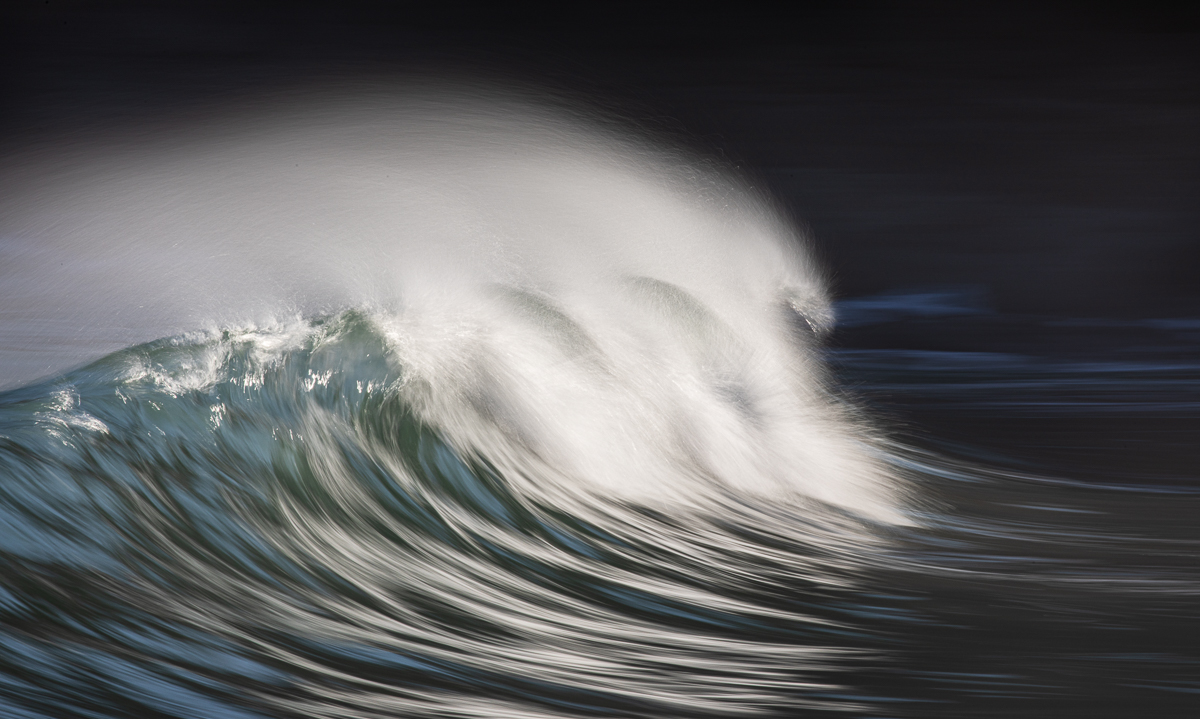Sue Trower was born and continues to live in Jersey, part of the Channel Islands off the northern coast of France. She took up photography seriously about 15 years ago with the purchase of her first digital camera. Sue was the official photographer for a number of years for the island Championship rugby side, the Jersey Reds, and still enjoys sports photography including surfing. Now Sue concentrates mainly on fine art seascapes both locally and abroad. In 2012 Sue gained an Associate distinction from the Royal Photographic Society which was followed by gaining an RPS Fellowship in 2017.
www.suetrowerphotography.co.uk
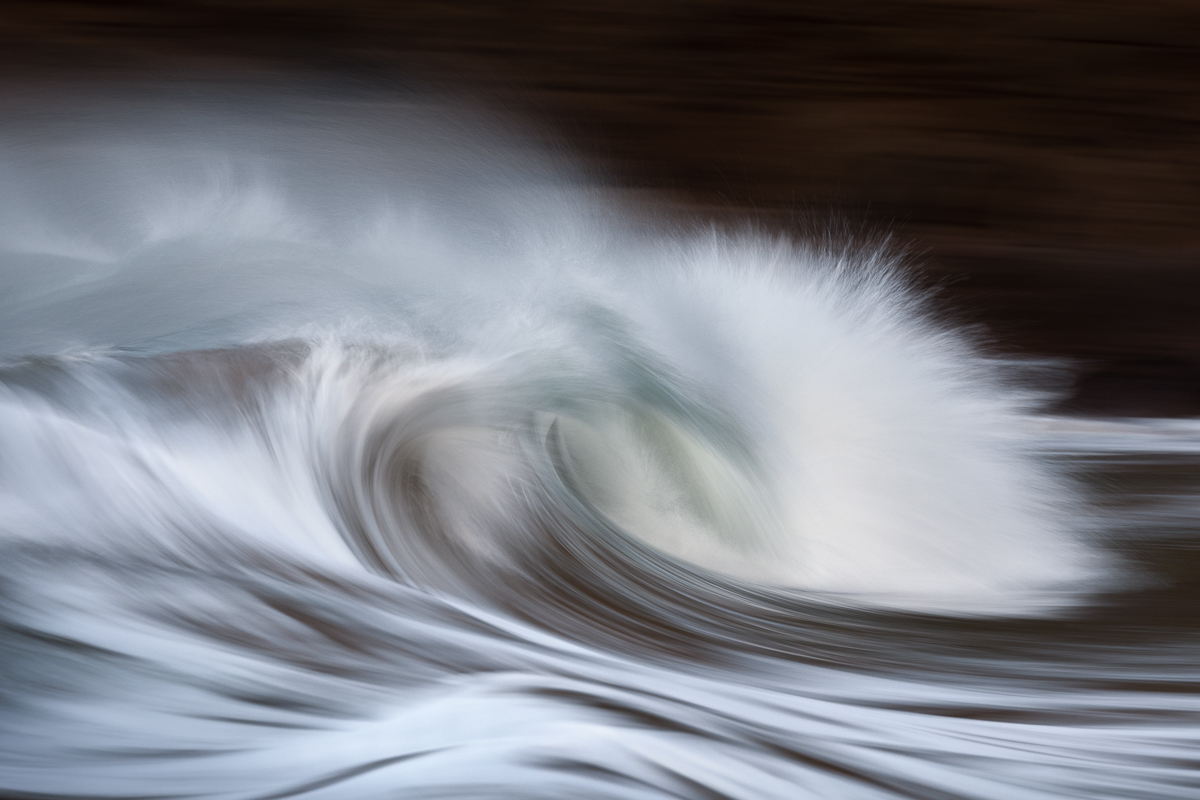
1. What was your path to become a photographer.
In common with many other photographers, I had an interest from an early age, mainly taking shots of family and friends using film. As soon as digital cameras became available, the photographic world really opened up for me and I set about learning as much as I could wherever I could. I had no artistic background but with the help and encouragement from my local camera club I worked my way through the Royal Photographic Society distinctions, gaining my Fellowship in 2017.
2. Do you prefer to photograph close to home or do you find faraway places more inspiring? Are there any special places that inspire you the most to create new work?
There is plenty of opportunity for both to be inspiring, if for different reasons. I live on an island so travel is not as spontaneous as I would like but the upside is that I am able to revisit locations time after time until the right conditions present themselves. Added to this I can hone new ideas in a familiar place so when faced with a totally new location, I am able to see how I want to portray the scene and have a selection of techniques available to me which I know will work. I would say that the vast majority of the time I am inspired and excited by the coast: the sea, the sand, the rock formations, the sky. All changing constantly.
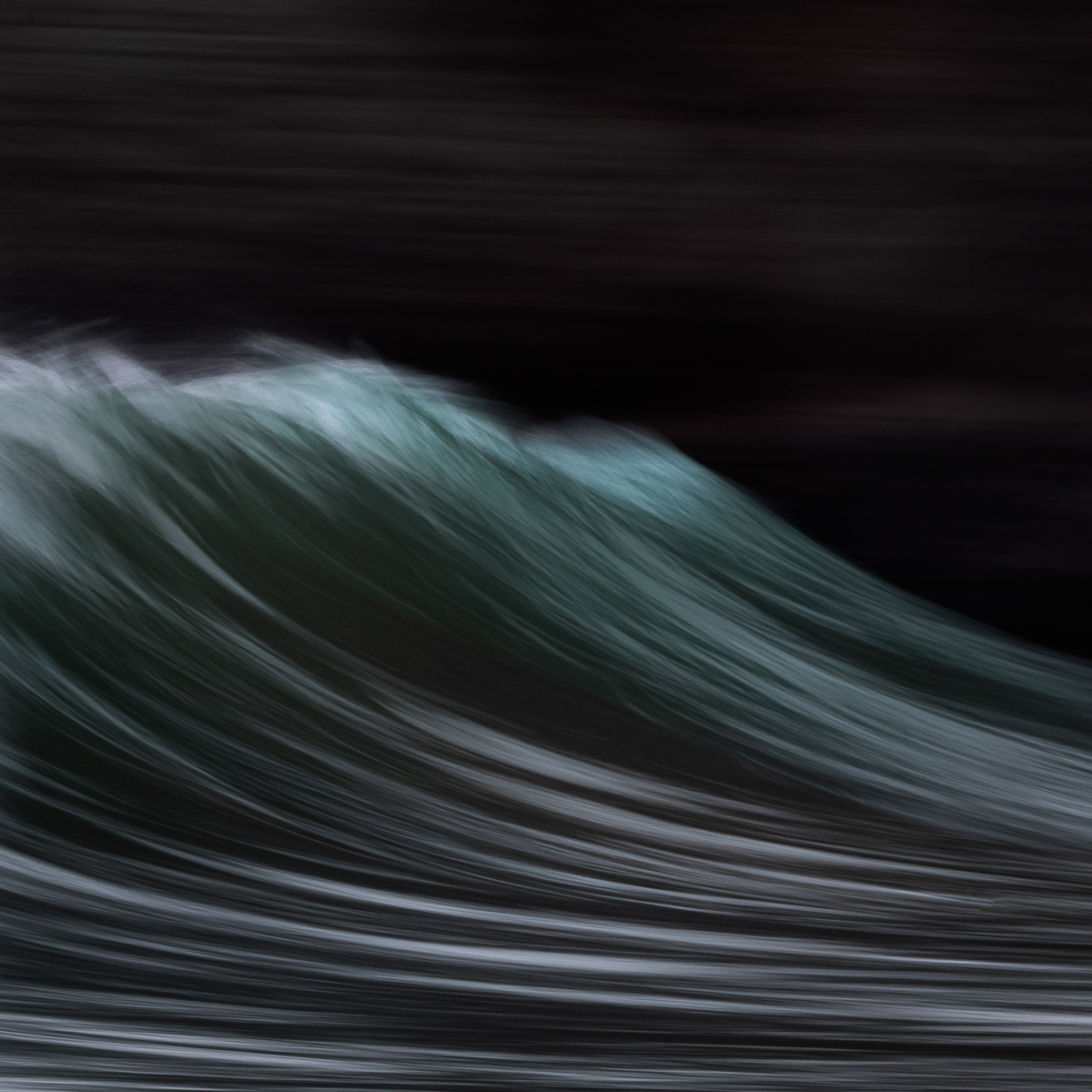
3. Are you a meticulous pre-planer or do you prefer creating images spontaneously? Do you revisit your favourite places many times to achieve the required result? Can you tell us more about your method of working?
If I am travelling abroad then I think planning is crucial as there is only a limited time available, although I try and keep an open mind and be flexible should the need arise. When I’m home, I probably will have an idea of what I would like to do but I am far happier if I see something out of the ordinary which makes my heart beat that little faster! I made a rule for myself a few years ago which is if you see an image stop everything and take it. That picture will not necessarily be there tomorrow. I check out the weather and surf reports about a week in advance and make a mental note of the days which may be interesting. Most of my work is long exposure, anything from a fraction of a second to five minutes or more.
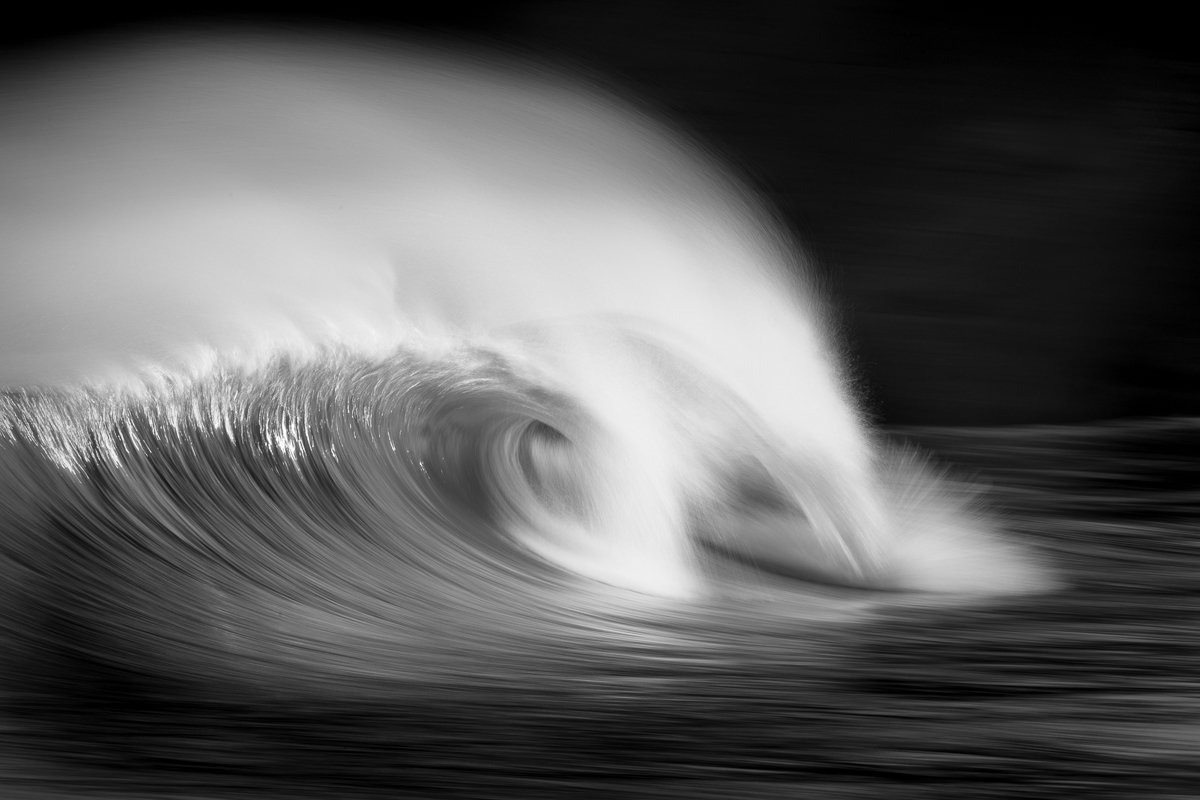
4. Terra Quantum displays themes and series portfolios; do you like working to the project/series/theme or find creating individual images more rewarding?
I tend to create individual images but when I get an idea in my head I become quite single minded and will see how far I can run with it. So a series is a natural progression as with my wave series. For my RPS Fellowship I produced a series of graphic mono landscape fine art images. These started as an idea and I just built on it over about two years. It was very enjoyable actively looking for images to fit in a themed cohesive panel.
5. Can you tell us a bit more about one chosen photograph – what is the story behind it, when/why/how it was created?
I’ve chosen this photograph because it was the first image of the wave theme which made me think I’d found something I could develop. I had arrived at one of our little bays on the island but nothing looked very inspiring so rather than go home I decided I would challenge myself and see what happened. The tripod, filters and spare lenses were left in the car and I just took my 70/200mm with the TV setting locked at 1/8th second. After a fair amount of experimentation, I had that wonderful little burst of emotion when I saw this image on the back of the camera. I have spent the last two years trying to get as much variation on this idea as possible.
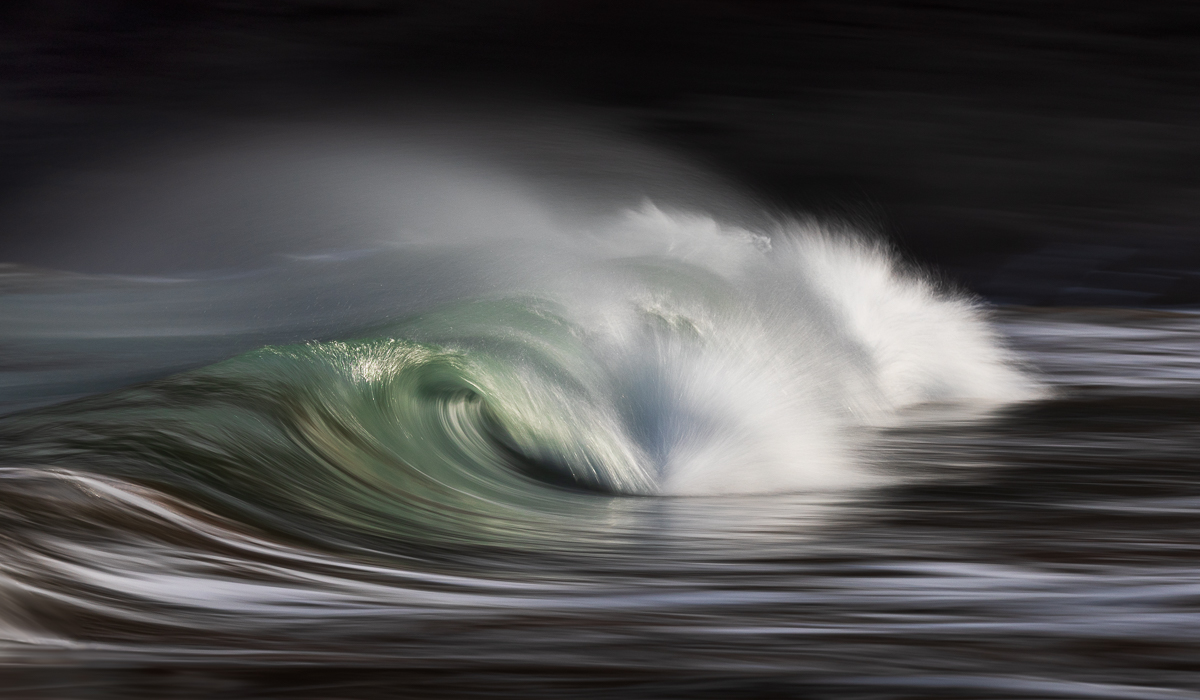
6. Colour, b&w or both? How do you decide about the elimination or inclusion of colour and why. When do you decide about it - in the field or during the post processing?
I work with both. Some conditions are just made for black and white and vice versa. With experience I am becoming better at judging on location which medium I will use, but when post processing I do check to see that I judged correctly. I use colour in quite a few of the wave images but I like to keep to a limited palette, I find that if the light is right, the colour gives a lovely depth to the waves and can be very painterly.
7. Do you find printing your images yourself as an integral part of image creation or do you use professional labs? How important is the choice of paper for you?
As frustrating as it can be, I do print myself. An Epson Hot Press Bright is my paper of choice at the moment. This paper produces some beautiful inky blacks.
8. Do you think that social media is killing photography or playing an important role in promoting your work? How involved are you in your online presence?
Social media has opened up a big new world of photographers and their wonderful pictures for me. I really enjoy the interaction with photographers who I would never have met if it hadn’t been for Facebook.
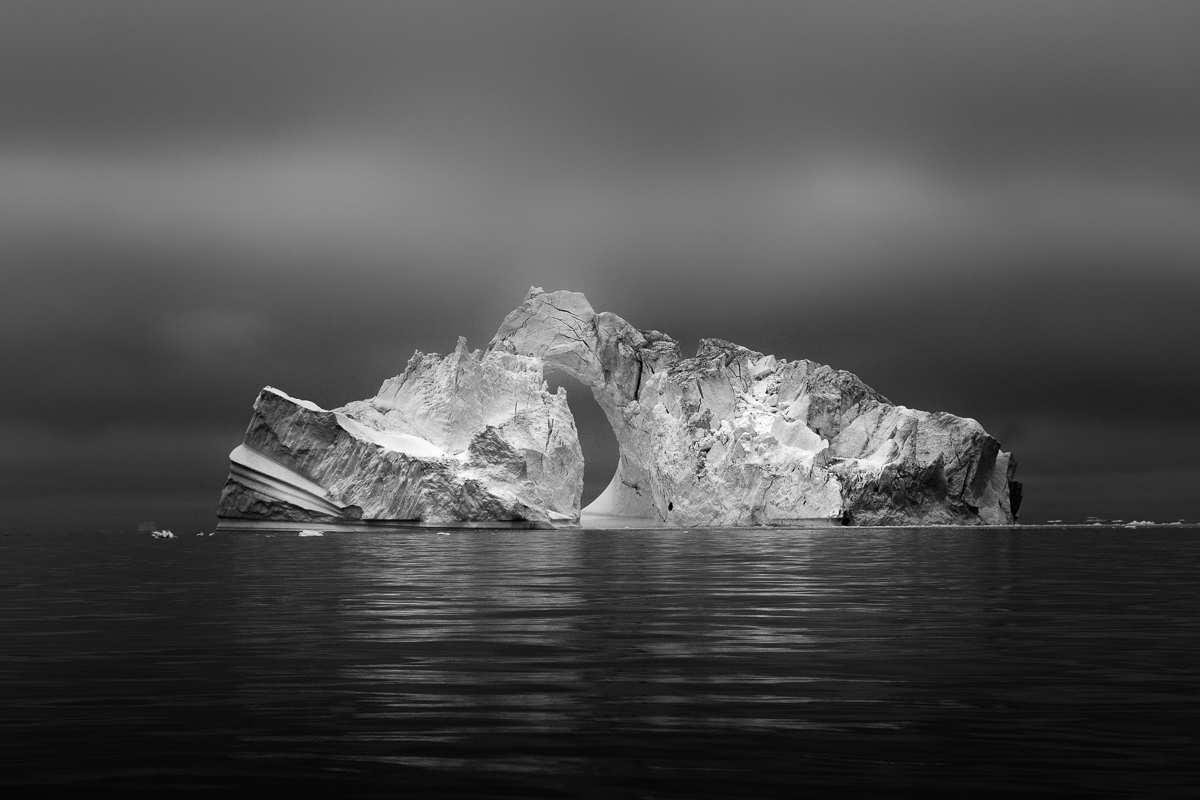
9. Do you have any plans for exhibitions, books or any interesting projects coming? Can you tell us a bit more about your artistic plans for the next couple of years?
I am extremely lazy when it comes to being commercial with my work, but I do have a few private clients who are very supportive and I sell through my website. The pandemic has made exhibiting difficult but I am seriously thinking about putting one on in the next couple of years. I have been asked in the past but it is only now I feel ready to do so.
10. We are living on the most beautiful planet, yet it is over-burdened and over-polluted. As photography is an influential medium, do you use the power of your photographs to promote our Earth appreciation and environmental awareness? Any thoughts how photographers in general can become more involved in this important matter?
I like to think that in a small way I do. Long exposure of say two or three minutes can give a sense of calm in a turbulent world and maybe urge the viewer to take a little time to stop, look and appreciate the tiny part of the planet we inhabit. I have been very fortunate to travel to the Arctic and brought back photos of the most stunning icebergs and glaciers. Many comments I received mentioned the fact that the ice pack is retreating fast so maybe photography is a good way to keep people aware of the effect of climate change.
